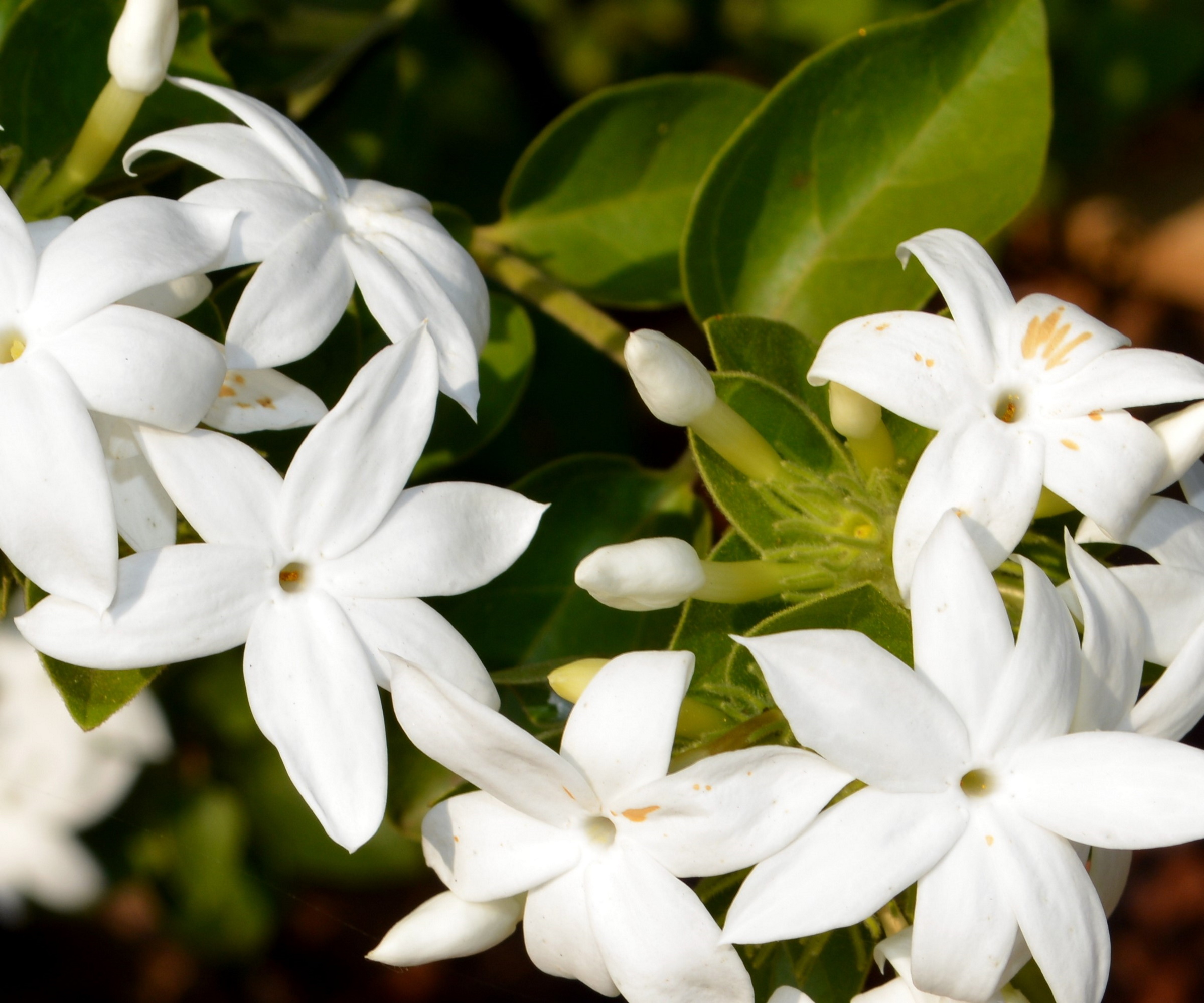
Jasmine climbing plants are a garden staple. When you brush past a jasmine climber, it is impossible not to be enamored with the scent, helping to explain why this plant has been prized for its fragrance for millennia.
Most of us will be familiar with jasmine plants, Jasminum officinale, and many gardeners across the world would consider this one of the best climbing plants. When thinking about how to grow jasmine, this climber is both hardy and low-maintenance, and with a small amount of attention and care, your climber will reward you with a fragrant flowering show for much of the growing season.
While jasmine is not considered a heavy feeder, moderate fertilization during the spring and summer can help your climber to thrive. Here, plant experts provide all the information you need to feed and maintain your jasmine plants, including the right time to fertilize and the best products to use.

How and when to fertilize jasmine
Jasmine plants are grown across much of the temperate world, but typically do best in mild and warm regions, thriving in US hardiness zone 7 to US hardiness zone 10 plus. These plants can be grown in the ground, covering large surface areas such as exterior walls, fences, and pergolas, or jasmine can be grown in pots, making this climber suitable for large and small spaces.
However you grow jasmine, learning how and when to fertilize can help to improve plant health and guarantee better blooming the following year.
When to fertilize jasmine

While jasmine plants are not considered greedy, knowing how and when to fertilize jasmine can help to improve plant growth and blooming. If you are looking for a fast-growing flowering vine, jasmine can grow at extraordinary rates of 2 to 3 feet per year under optimum conditions. During the first year after planting, regular feeding and watering can help your plant settle and establish itself in your yard.
'Jasmine can be fertilized lightly during the active growing season,' says plant and garden expert Katie Sunderlage. 'Feeding is best done when the plant is blooming, which is typically from June to August, although this will vary depending on where you live.'
'Once the blooms have stopped in late summer, I wouldn’t recommend continuing to fertilize,' Katie adds. 'After your jasmine has finished flowering, this is also the time to tidy up your plants and get pruning,' so at this point, put the fertilizer away and get the pruning shears out.
How to fertilize jasmine

Jasmine flowers are long-lasting and can flower for many months. As Katie says, while your jasmine climber is in bloom, you can lightly feed your plant to keep the floral show going.
'I recommend using a bloom booster fertilizer,' Katie says, 'which will help your plant to keep producing brilliant blooms for much of the summer.' There are many products available online or in stores, such as this organic bloom booster by Dr. Earth, available from Walmart.
Katie recommends that gardeners 'make sure the phosphorus level, or the middle number in the fertilizer formulation, is high.' This is because phosphorus is a key nutrient needed by your flowering plants that helps them develop flowers and produce fruits.
'I also recommend using a slow-release fertilizer,' Katie says, 'to make sure your plants continue to feed throughout the active growing season.' This can be particularly useful for gardeners with smaller plots who grow in containers - using slow-release granules can help to reduce the amount of attention required for your flowering plants in pots. Slow-release fertilizers are available from Amazon.
It can also be a good idea to incorporate some fresh compost or mulch into borders and containers each year, and doing so will help to improve soil health in your yard. For example, this Miracle-Gro organic mulch, available from Amazon, can help suppress weeds, feed your soil, and retain moisture during the warmer months of the year. While you can apply mulch at any time of year, I find it best to do so in the fall and winter months, when you have cut back plants and cleared your borders, making it easier to access the soil.
Shop fertilizer products
If you are looking for big blooms and vibrant colors, this is the fertilizer to buy. Miracle-Gro bloom booster can be used on any flowering perennial, annual or shrub, and feeds your plants with a special formulation.
This liquid jasmine fertilizer is suitable for all varieties of jasmine and will help to keep your plants looking good, with shiny leaves and blooms blossoming. Always follow the instructions found on the packaging.
This all-in-one solution is for the serious gardener. One application of Osmocote granular plant fertilizer contains 11 essential nutrients and feeds live plants up to 6 full months. Apply once and remove fertilizing from your to-do list.
FAQs
What is the best product to use for feeding jasmine plants grown in pots?
All jasmine plants, whether grown in the ground or in pots, can be fertilized during spring and summer. It is best to feed your jasmine climbing plants when they are in flower, using a bloom booster product that is high in phosphorus. Once your jasmine begins to fade, it is time to stop feeding. As with all plants grown in containers, watering and feeding requirements will be greater than those plants grown in borders.
Feeding your jasmine plants during the spring and summer months can help to extend their bloom time and improve plant health. While jasmine climbers can grow just fine without regular fertilizing, sometimes this can help to give your prized plants a boost.
For more scented plant inspiration, see our guide on plants that make your patio smell nice, for a floral and perfumed backyard this year.







